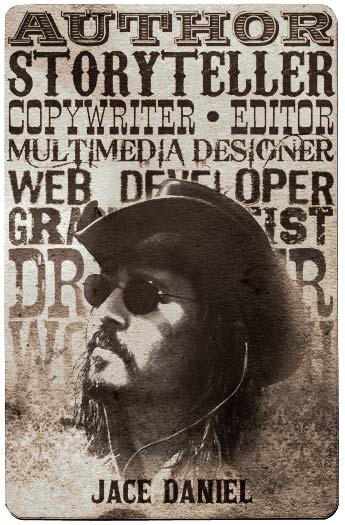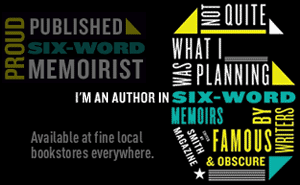The purpose of this article is not to serve as a critical review of The Matrix Reloaded. Intending it as such would require one to regard it as simply another film. It’s not. To say that it has raised the bar and set a new standard is also inappropriate, as by doing so one must optimistically assume that, by definition, other films can meet this new standard. They can’t.
For those seeking a traditional rating on a 1-5 star system in order to form their opinions through my own, fine. I’ll give it the exponentially-derived 25 stars. There you have it. But keep reading.
The true purpose of this article is to offer information that may not be so obvious to many viewers, and quite apparently has gone far over the head of numerous self-professed film critics who have sadly missed the entire point of this remarkable story. It seems that the majority of the population regards The Matrix films from an almost purely-mechanical perspective, with a focus on its cutting-edge production techniques, industry-changing camera angles, and good old fashioned kick ass kung fu moves. But all that is just the proverbial icing on the cake. What really sends chills up the spine to those paying attention actually happens on paper, in the story itself. Any person who doesn’t recognize The Matrix as the single most profound piece of fiction ever conceived simply doesn’t understand it.
Laurence Fishburne has describe The Matrix as “a combination of science fiction, Hong Kong kung fu, cyberpunk, and classic American action, with heavy doses of spiritualism and philosophy.” Eloquently put. I might’ve add “riddled with metaphors directly related to contemporary technological culture”, as its “Easter egg” quality is one of the factors that makes the film so fun to watch, analyze, and discuss. It is these “little things” that make The Matrix virtually impossible to have been made 10 years ago, before the Internet changed our lives forever. They say reality is stranger than fiction, and never has that been more true than in the recent years since the advent of the WWW. The Matrix plays off our own reality, in effect serving as a microcosm of our own world, which has become largely driven by technology. While this is probably obvious to even the most ignorant viewers on its surface, the true artistic value of The Matrix can only be appreciated by careful examination of the creative layers that lie beneath the movie itself.
To begin, let’s get up to speed and first turn our attention to the original film from 1999, The Matrix. You can find a plethora of information on the Web using your favorite search engine, where Matrix fans have posted loads of material ranging from the story’s metaphorical observations to Carrie-Anne Moss’s bra size. Below are some of the more notable things about The Matrix that you may or may not have been aware of. We’ll move on to Reloaded after this necessary recap.
Cool Matrix stuff to catch next time that only overly-analytical geeks like myself give a rat’s ass about:
1. The underlying anti-Micro$oft message, (with the political pro-Open-Source vibe):
a. “Agents” – The term “Agent” is used extensively in Micro$oft server software applications. And it’s no secret that the Agents are the “bad guys”. 
b. Blue Pill vs. Red Pill – The blue pill, symbolizing conformity, complacency, and brainwashed contentment. Blue happens to be M$’s corporate colors. The red pill symbolized freedom, knowledge, and individuality. Red is significant in the world of Open Source operating systems, such as RedHat Linux and the color of an Apple.
c. Neo worked for a company called MetaCortex, which among other translations, literally translates to “beyond grey matter”, “super-consciousness”, “transformed brain”, etc.
d. Neo’s day gig with MetaCortex, which is described by his boss as “the biggest software company in the world”, has an obvious Micro$oft vibe. One exceptionally cool element they added here was when he was in his boss’s office getting reprimanded for being late. Recall that scene. Was there anything you remember in particular? Neo was sort of distracted during the whole lecture by the squeaking sound created by the squeegees of the seemingly irrelevant window washers outside. Get it? WINDOWS!!! 
2. “Mouse” (pad), “Switch”, and in Reloaded, “Link”, “Key” (Maker), and “Lock”. We also meet the “Architect”, referring to the industry term “information architecture”, which is the applied science of categorizing and organizing information for optimum accessibility, typically on a web site.
3. The Numbers:
a. Neo’s apartment number was 101. (Binary for 5). *In Reloaded, we learn that there have been five previous versions of Neo; the Neo we are watching in the film is in fact the sixth iteration.
b. At the beginning we zoom into the number 555. In numerology, this number corresponds to the Messiah, or the chosen one.
c. Neo is an anagram for “One”
d. Check out the room numbers for Trinity and Neo. When the cops bust in on Trinity in the opening scene, the room number is 303 (“trinity,” 3). Again, Neo, “The One” lives in apartment 101.
e. Coincidentally (or not), Matrix, Trinity, Morpheus, 303, and 101 are all makes and/or models of music *synthesizer*. In Reloaded, we meet two characters known as “The Twins”. In Astrology, twins are associated with the sign of Gemini. Gemini is a vendor that, among other things, also makes synthesizers.
4. Almost every line spoken by Neo’s “customer” in the beginning of the film (“You’re my savior,” “You don’t exist,” etc.) is foreshadowing. btw, pay attention to the white rabbit girl’s crowd, and their relationship to the first scene of the movie. Keep in mind that they are a computer program (likely written by Mouse) being launched by Trinity in Scene 1, which she was forced to abort prematurely when the cops broke in and busted her (more on this in a bit). Also note the white rabbit and additional Alice references in the flick.
5. When Neo is meeting with the Oracle, the music playing in the background in her apartment is Duke Ellington’s “I’m Beginning to See the Light,” a reference to Neo’s continued awakening. In the scenes immediately leading up to Agent Smith’s interrogation of Morpheus, there are two pieces of music played back to back. The first is entitled “Threat Mix”, the second is “Exit Mr. Hat”. Both are anagrams of “The Matrix”.
6. In the Oracle’s waiting room, the television is showing Night of the Lepus (1972).
7. Names of people and objects have historical significance, all related to dreams and illusions. For example, “Morpheus” (film character) was named for the Greek god of sleep and dreams; and “Nebuchadnezzar” (hovercraft in film) was a biblical king who was visited by troubling dreams. In Reloaded we meet Persephone, who in Greek mythology is the goddess of the Underworld and wife of Hades (Lord of the Dead). In the Matrix Reloaded, she is the wife of the Merovingian, the name of a mythological race of beings believed to be descendants of “Nephilim” or “Fallen Angels”, who created mankind as we know it today. Cypher=”code”. And then there’s (Lu)cifer. From the script:
Cypher: “I don’t want to remember anything. NOTHING! Understand? And I want to be rich…and important. Like an actor. Can you do that?”
Smith: “Whatever you want, Mr. Reagan.”
Hmm… a rich actor with memory loss. Sound familiar? 
8. There are many Judeo-Christian connotations in which Christ-like symbolism can be found in the character of Thomas Anderson (Neo). One would be his “ascension” @ the end of the first film. Also, Anderson means “Son of Man,” as Jesus is often called. Messiah. In scripture, “Doubting” Thomas couldn’t believe it. He “had to see it for himself.”
9. Neo hides his money in a book titled Simulacra and Simulation. This is a genuine work by Jean Baudrillard, that deals with issues of reality versus simulation. When Neo opens the book, we see the chapter, ‘On Nihilism’, referring to the theory that everything tends to level down into nothingness, as humanity and civilization have in the period leading to the creation of the Matrix in 2197(ish). Also the Matrix came out in 1999, suggesting that things started going bad after the Y2K issue we were dealing with that year. Remember that one?
10. The Oracle gives Neo a cookie. In ancient Greece the Delphic Oracle was also a woman, and candidates for her advice were given a barley cake mixed with honey to eat. In modern times, Oracle is the largest database software company in the world, the engine behind the largest search engines known. “Software Powers The Internet”. A “cookie”, in browser-speak, is a software component attached to a user’s browser for the purposes of behavior tracking and future identification.
11. The definition of “matrix” which naturally comes to mind in the movie is the computer science term: “the network of intersections between input and output leads in a computer, functioning as an encoder or a decoder.” However, the word has other definitions (it means “the womb”) and in anatomy: “the intercellular material in which the cells and fibers of connective tissue are embedded; a surrounding substance within which something else originates, develops, or is contained.” This conjures up a whole new gooey visual to the phrases “in the matrix” and “coming out of the matrix”…
12. A cool production thing is the attention they gave to the differences between the scenes *in* the Matrix and the scenes *outside*. In the Matrix, there’s a monolithic green hue to the whole vibe…everything is on grids, as if a computer created it. Notice the walls, the ceiling, the floors, they all have grids. In the Nebuchadnezzar, there’s a total absence of green, things are more organic and worn, with very few right angles. They replaced the greens with blues…the only green thing you’ll see is Tank’s monitor.
13. When you watch it again, pay close attention for the first 10 minutes of the movie or so. Notice the direct relationship between the first scene (the cursor on the screen w/ the conversation between Trinity and Cypher), and the scene with the white rabbit.
Nutshell:
Trinity, in the Matrix, is logged in to a chatroom where they suspect Neo hangs out. She calls Cypher and says “Is everything in place?” They exchange a few words, and then the cops break in on her in the hotel room (a result of the yet-unrevealed traitor Cypher turning her in and cutting the hardline). She kicks ass, runs off, gets chased, and gets to the phone booth in the nick of time, escaping out of the Matrix and back to her chair in the Neb.
When she says “Is everything in place?”, keep in mind her agenda. She and the others are trying to find Neo. To do this, they need to lure him…he has to *choose* the red pill and can’t be forced. So the plan of attack is to exploit his curiosity, intriguing him into their world. In that first cursor scene, Trinity’s about to execute a script, likely written by Mouse, and she was confirming with Cypher (who was monitoring everything), if everything was ready to roll. That executable program Trinity was about to launch is the white rabbit girl, just like the woman in the red dress.
The first thing Neo says when he opens the door is “You’re two hours late”. The reason they’re late is because Trinity had to abort the program when the cops came in during that first scene. The “appointment” the people had with Neo was largely manipulated by the absence of the white rabbit girl (Trinity’s script), which had to be stopped so that Trinity could run away and escape the Agents. Only after she got out of the Matrix and reentered to re-execute the script did the folks arrive @ Neo’s. The delay was probably about two hours.
Other than that (and more), it was just another sci-fi movie.
OK! Now let’s move on to The Matrix Reloaded.
***WARNING*** SPOILERS BELOW!!!
Do NOT go below the dotted line if you haven’t seen Reloaded yet.
…………………
First things first…
The Matrix Reloaded has raised a brand new batch of questions to ponder. In fact, it’s one big question. While we must wait for Revolutions to learn the answer, we can now begin entertaining the ideas that have been suggested here in the second installment:
Zion, and the “real world” that contains it, is a computer program. The “real world”, as we thought we knew it, isn’t real @ all. We’re in a situation where we must ask the question:
IS NEO ARTIFICIAL INTELLIGENCE? (and all our heroes for that matter!)
A few notable things in Reloaded that point to this possible conclusion:
1. The Oracle says that “programs create programs” and every program has a purpose. When it no longer has a purpose, it’s deleted. Programs will create other programs according to their need, in order to give themselves purpose. This is consistent with Morpheus’s explanation of Artificial Intelligence in the first movie. As he put it, A.I. became a “singular consciousness that spawned an entire race of machines”, or in other words, a program that created other programs, which in turn created other programs, and so on. (btw, “singular consciousness”… Hmm… cingular? lol…)
2. The orphan boy sent a spoon to Neo. One may think this was “for old time’s sake”, as a good luck gift of sorts. However, we must wonder if there is a much deeper message the boy is trying to send to Neo. Remember the unforgettable line from the first film, “There is no spoon.” When Neo in Reloaded unwraps the spoon, remember that he’s *in* Zion. If there is no spoon, then there is no Zion, and no “real world” to contain it! Is this what the boy is trying to tell Neo?
3. @ the end of the Reloaded film, back in the “real world” with the squiddies, Neo says “Something’s different…I feel them.” In true Neo style, he turns and overcomes the hostile sentinels through his own will power, holding out his hand and stopping them dead in their tracks. Therefore, this “real world” that we thought was real is not real @ all, but a simulation in itself. It’s a software program. And this program, in order to have purpose, created other programs like the sun, moon, people, fossil fuels, oxygen, and so on. Within these subprograms came the program of human intelligence, which in turn created technology, and eventually what it would consider Artificial Intelligence. This Artificial Intelligence (which really is a subprogram several generations deep from the “real world” program), had its *own* purpose, and therefore created *another* program known as the Matrix… along with the pods, and the humans themselves… in order to fulfill its own purpose. Now, if these humans were farmed as batteries by this program to run the mainframe for the Matrix it created, then these humans can only be programs also! Subprograms, if you will. And then these human programs in turn create their own programs, or “needs” according to fulfill their purpose that the Oracle speaks of. This is why Neo *willed* Trinity back to life, and vice versa. They *need* each other for their purpose, otherwise they’d be deleted!
4. Smith has “hacked out of the Matrix” through the one bearded guy. @ first I was thinking…he must’ve “hacked into reality”, and manifested his intelligence in a human brain. But that doesn’t quite jive, does it? Doesn’t it make much more sense that he didn’t hack into a human brain, but simply hacked into another program? Trojan Horse style? He simply crossed over from one program to another!
If there is no spoon…what makes us think there is a Neo? Or a Trinity? Or anybody? Anything?
Note the strong theme of choice in the film. Free will, the fundamental question that we’ve all pondered as part of our human nature. As the Oracle said, it was when she introduced the programs to the idea of choice that they began to make decisions and develop human behavior. Think of all the choices throughout the films…the red and blue pill… the two doors… yes or no… black or white… up or down… in or out… top or bottom… left or right… on or off… BINARY!!! ONES AND ZEROES!!! This is precisely how software thinks. In fact, it’s the only way it can! What took Artificial Intelligence to the next level is when it realized it could choose between a 1 and a 0. And what we’re beginning to see is that once Artificial Intelligence knows how to choose, it begins to develop human emotion. We saw it with Agent Smith in the first film, when he began to display impatience, agitation, and hate. If software can have these feelings, can it not also feel love, loyalty, curiosity, greed, and arguably the most human emotion of all, lust? In Reloaded, we see Artificial Intelligence engaging in the most human of all behaviors during the Zion orgy scene. While most viewers wrote that off as just another steamy flesh scene, it was far more profound than that. That was software getting off on itself.
OK, now let’s really dig. Remember the conversation Neo had with the Architect? Here it is from the script for your review:
The summary:
Neo was not the first One, but the 6th. Same with the Matrix, it was the 6th version. The first version of the Matrix was perfect, yet not. The humans couldn’t handle the first Matrix, as it had a monumental flaw. As the Architect reflects, it only had a 99% success rate. Therefore, when 1% of humans would awaken, anomalies would occur. So the Mother, the Oracle, stumbled across a solution: 23 humans (7 men, 23 women) could be freed and allowed to rebuild Zion from scratch. And through the Oracle’s prophecy, they were told to search for “The One”, as in “the 1%”. Several generations of this new Zion live out their existence (for about 200 years), and each time, The One is found. He eventually gets to the Architect and and RELOADS the Matrix, using the removable media given to him by the Oracle (from the messenger, if you recall). The current ONE is freed out of the Matrix, and the 23 others that the old ONE chose start the loop again (123…i.e. One, 23,…). The One will mathematically always occur as a result of this algorithm. So, this is all about Neo or the One being freed. Neo, and only Neo, will be freed.
The anomaly is systemic, creating fluctuations. i.e. new generations of itself… mutations… versions…. programs. Evolution. The first Matrix was not perfect… as the Architect says, it was “quite naturally perfect”, yet it’s precisely this perfection that made it flawed. Neo is to be freed out of the Matrix, or more accurately, freed from the “Matrix” program nested in the “real world” program which created it for its own purpose. The truth is, he can never be freed. He can never be freed, because to be free, he needs to choose Door 1. That’s impossible, as his choice has already been made. He is a program, and as the Oracle points out, is programmed to fulfill his purpose. He NEEDS Trinity to have purpose (i.e. “I need you.”) Therefore, it it is this human emotion that blinds him to the purely logical correct choice of choosing Door 1. Hence the loop. A perfect system.
While we can only wait until November to see how this all pans out, I submit to you a possible ending to this story, which in fact is not an ending @ all, but a beginning. Actually, there can be neither, as we’re now in a loop. Imagine this as the final scene of The Matrix Revolutions:
Back in Neo’s apartment, where we met him in 1999, asleep @ his computer. On the computer screen: “Wake up Neo…”
FADE TO BLACK w/ a new Rage song.
And now, from a semantic point of view, consider the title of the third installment and its definitions. Due to the nature of the story, we tend to associate the first three definitions to the word “revolution”. Step back for a second, and consider the fourth:
REVOLUTION:
1. A total or radical change; as, a revolution in one’s circumstances or way of living.
2. The overthrow of one government and its replacement with another.
3. A sudden or momentous change in a situation: the revolution in computer technology.
*4. A single complete cycle; return to a point before occupied, or to a point relatively the same; a rolling back; return; a loop.










Comments on this entry are closed.
*UPDATE* The Matrix: Where Are We Now?